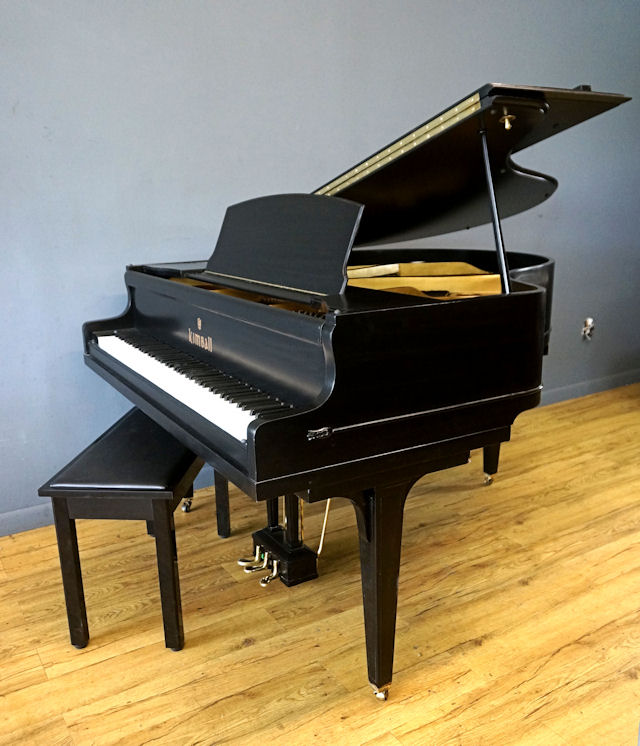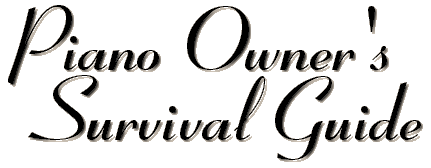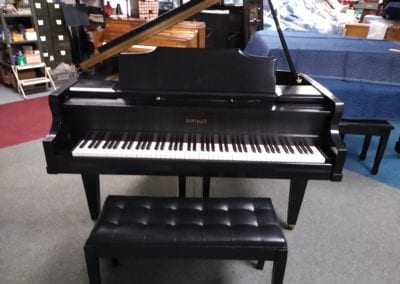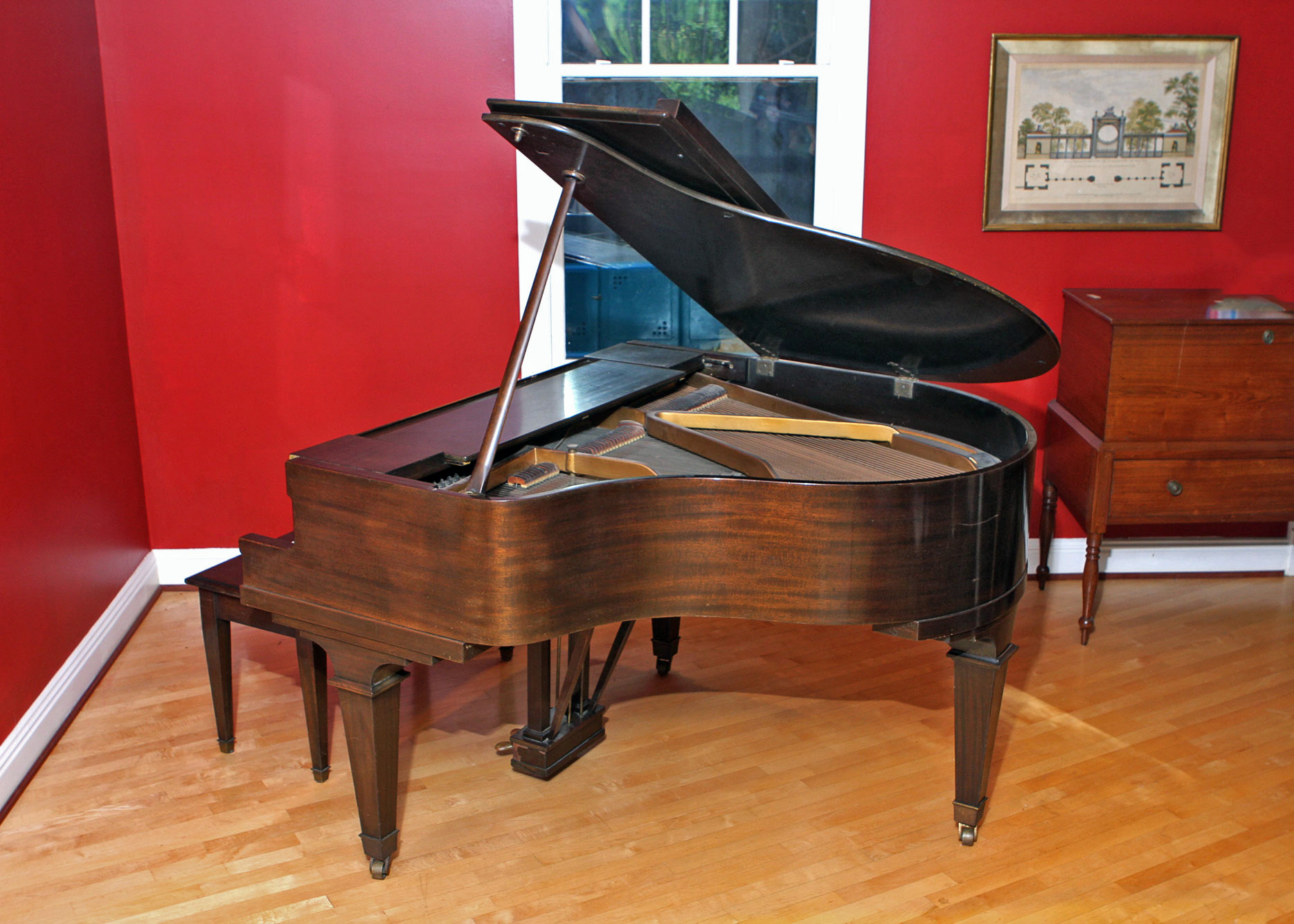

- KIMBALL BABY GRAND PIANO KEY REPAIR PARTS KIMBALL FULL
- KIMBALL BABY GRAND PIANO KEY REPAIR PARTS KIMBALL FREE
- KIMBALL BABY GRAND PIANO KEY REPAIR PARTS KIMBALL CRACK
The cabinet often requires repair or full refinishing if one wishes to have a clean, newer look. Dampers not shutting off the vibrating strings are also something we find often. It is not uncommon to find pedals that are not functioning. The pedal/trap system on an upright piano is more compacted and in a way more intricate than on a standard grand. When the bridge cap cracks it can cause the bridge pin to shift and become loose, leading to a loss of proper string termination, and tuning instability. The soundboard bridges which transmit the vibrations of the strings to the soundboard, may fail.
KIMBALL BABY GRAND PIANO KEY REPAIR PARTS KIMBALL CRACK
The piano’s soundboard may crack and come loose from its supporting ribs, causing unwanted vibrations and annoying buzzing. For example, there are a number of types of flanges that were utilized ‘back in the day’ that are no longer used by any company. Antiquated designs can make servicing difficult and often these designs are antiqued for a reason. The complexity of any piano’s action means that there is a litany of issues that can manifest within it. Keys may be sticking due to broken parts, verdigris, or items and grime that have fallen under or into the action. The vast majority of old upright pianos have not been taken care of over the years, this can become very apparent when attempting to play or work on one. A one-hundred-year-old action will almost always feature heavily string cut hammers, broken parts, or at least will be heavily out of regulation. The piano’s action is made up of thousands of moving parts. This can be dangerous as well as annoying.

Under tension, old piano strings can break when tuned. Strings, especially the copper wound bass strings can deaden due to oxidation, excessive moisture, and grime.


Over time, tension combined with swings in humidity can cause the pinblock to fail and other structural issues can become apparent. The tuning pin holes can become enlarged, compromising tuning stability. Swings in humidity are one of the primary factors when it comes to the wear and tear placed on a piano. More than likely, an old upright piano was kept in an environment where the humidity level was not ideal. This is absorbed by the cast iron plate, the pinblock, and the piano’s cabinet. When pulled up to pitch, the strings exert tens of thousands of pounds of string tension. The moment a piano is completed, it is immediately put under tremendous stress. Repair and restoration costs are the next pieces to keep in mind before picking up the bargain piano you have your eyes set on, as these costs can be the most expensive. Unfortunately, we have often found that an old piano that has not been properly maintained over the years may not be tunable without a serious amount of repair/restoration work. Tuning obviously falls under basic maintenance and is something that any piano owner should keep up on. This requires the tuner to go through the piano more than once, increasing the cost. A piano that has not been tuned for a long time may require a pitch raise. Tuning fees usually range between $90 and $150 dollars depending on the tuner/piano technician you hire. Next, we’ll get into the additional costs of tuning and repairs. Moving a fully functional piano from one location to another, for a few hundred dollars. Keep in mind, this is likely the best-case scenario. This cost can be in the hundreds of dollars. Asking a couple of buddies to help you move it will not suffice, and likely will cause more damage to the piano and potential injury to those attempting to move it. Awkward in size and weight, these instruments require a qualified piano moving team to safely remove, transport, and set up the piano at its new home. Old, full-size upright pianos can weigh nearly 700 lbs.
KIMBALL BABY GRAND PIANO KEY REPAIR PARTS KIMBALL FREE
There are a number of hidden costs that might not be apparent when it comes to a free or cheap one-hundred-year-old upright or even a grand. Below we will go over the top reasons you should think twice before undertaking the inconvenience of acquiring a free/cheap piano. There are more than a few reasons that these pianos are often left in homes when they are sold and you can find free pianos abound on the internet. “A free vintage piano and all I need to do is pick it up and have tuned!” Unfortunately, these apparent deals can quickly turn into money pits that leave you with a lackluster, barely functioning instrument that cannot be improved without an inordinate amount of labor and money. At first, this can sound like a deal of a lifetime. Bring lots of friends, this thing is heavy…”Īds similar to this example, fill newspapers and local Craigslist listings all over the country. “Free piano! Plays great! *just needs tuned. Why A ‘Free’ Upright Piano Is Not Always Free


 0 kommentar(er)
0 kommentar(er)
